Free Preview: Gardening for Birds and Nature
Enjoy this sample content from Growing Wild: Gardening for Birds and Nature. There are 32 topics to learn from in this self-paced course—plus regional guides for the U.S. and Canada, planning tools, and discussion boards to help you connect with other gardeners.
From Lesson 2: Provide Water
Birds will also drink dewdrops or rainwater from leaves. Some birds also get water from their food, especially fruit and juicy insects. Birds need places to perch while they sip water. A secure place to perch gives them good footing as they lean in for a drink.
Birds are often on the lookout for danger and usually want a place they can retreat to in case a predator comes near. That’s why birds prefer water that’s close to a source of cover. Bathing in water helps birds remove dirt and parasites from their skin and feathers.
No matter the species, birds seek water. And just watch birds bathing. We can’t help but smile to think they’re having some fun!
Attract Food that Birds Love—Insects and Spiders
A whopping 96% of all non-shore North American songbird species consume insects for at least part or all of their lives.
Just as most birds eat insects, most insects eat plants! A variety of plants can support a variety of insects, but some plants are especially good at providing food for a rich diversity of insect species all on their own. To ensure a diversity of caterpillars, start with a diverse array of host plants. Some butterfly/caterpillar species will only use a single host plant—but one host plant can support a variety of caterpillars.
White Meadowsweet (Spiraea alba)
This smaller shrub and its native allies are host plants to more than 90 species of caterpillars and butterflies, and scores of other insects that birds eat. With white meadowsweet thriving in its native eastern to midwestern range, birchleaf spiraea (Spiraea lucida) thrives in the Pacific Northwest, and steeplebush spiraea (Spiraea tomentosa) has pink blossoms and grows in most of eastern North America as well as in Oregon. Our native Spiraea shrubs must not be confused with similar plants in the same genus that don’t support insects as well and have become invasive in North America.
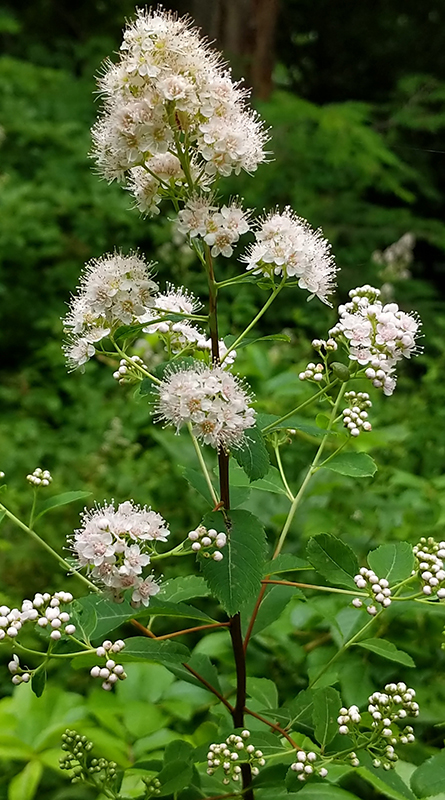
(Spiraea alba)

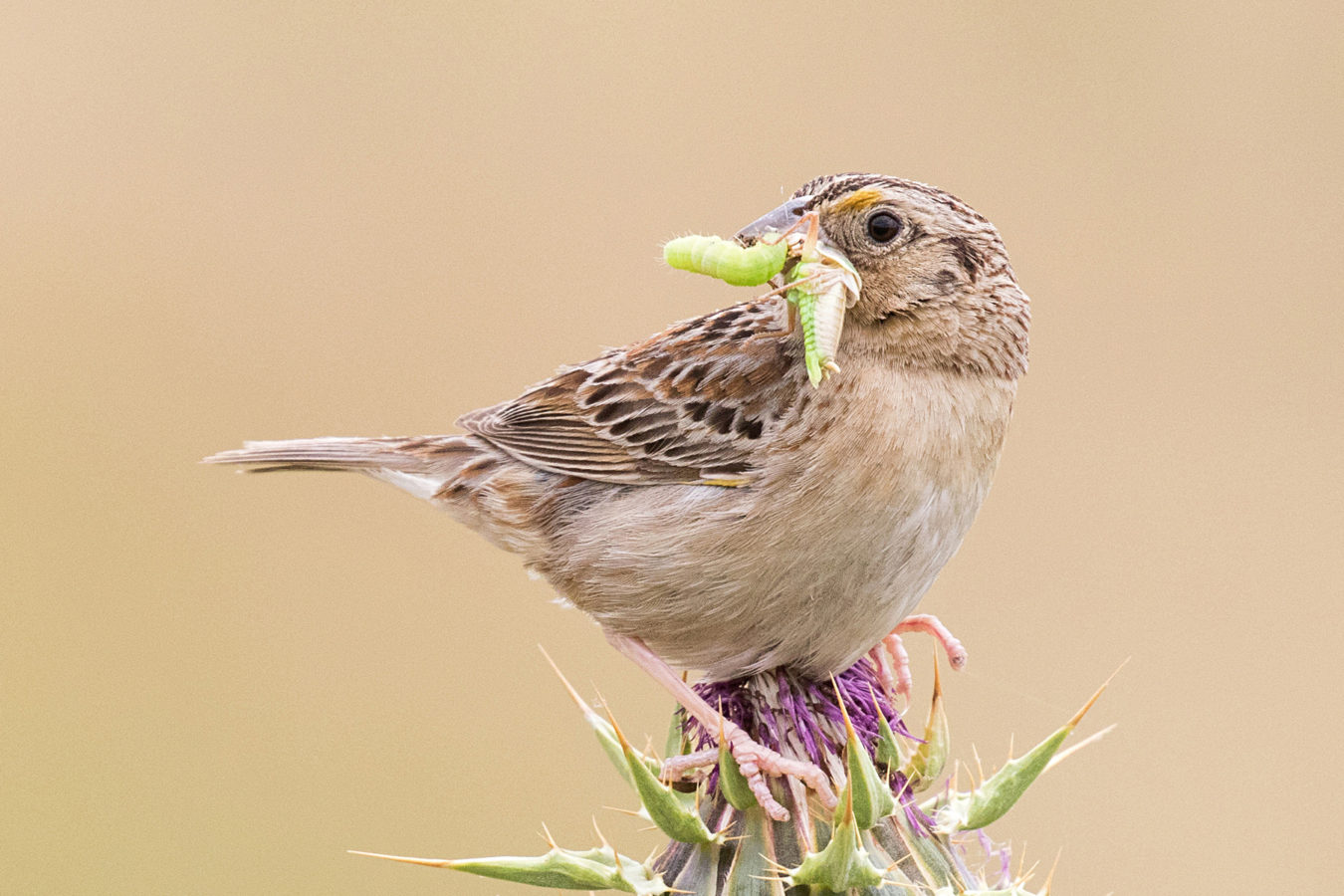
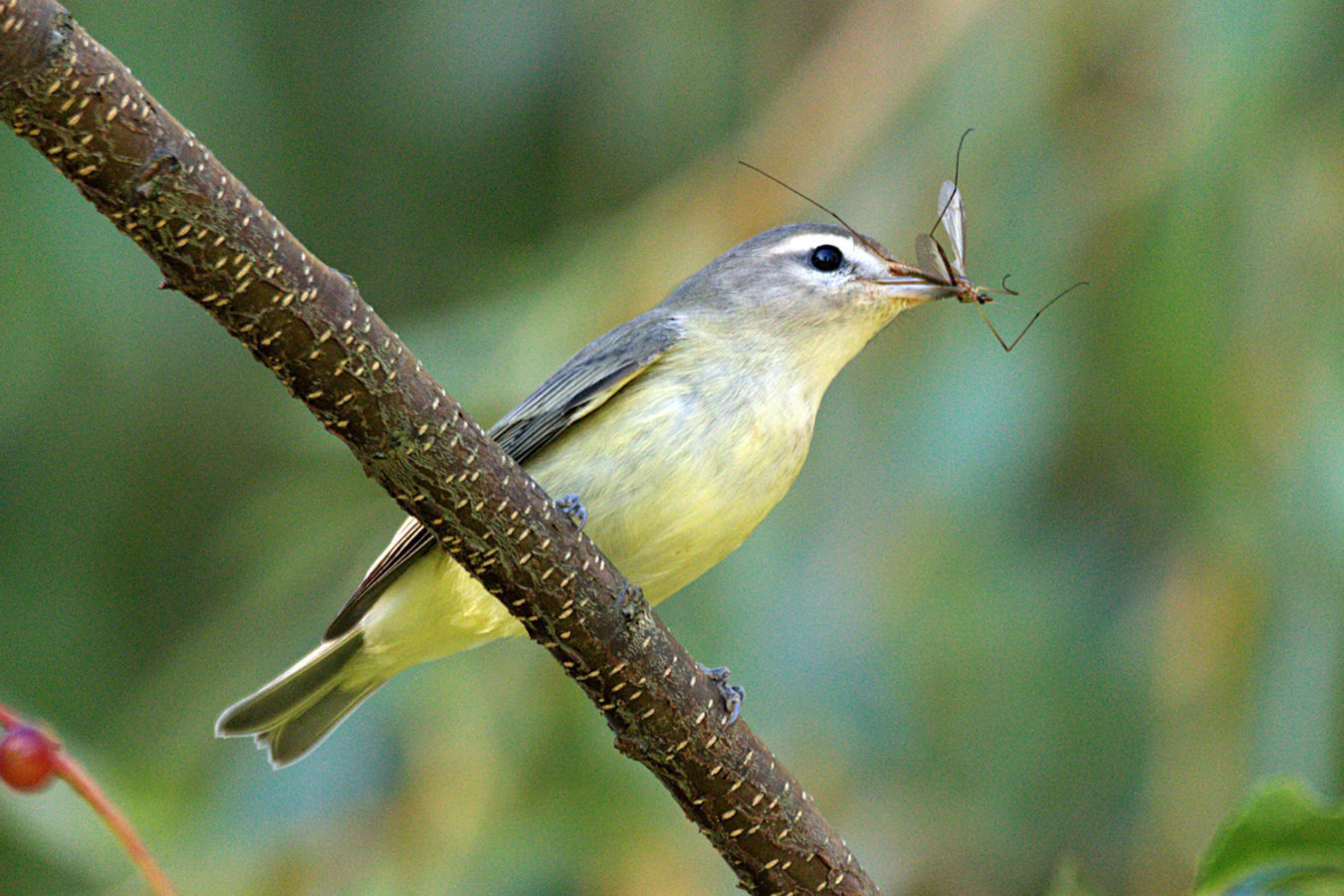
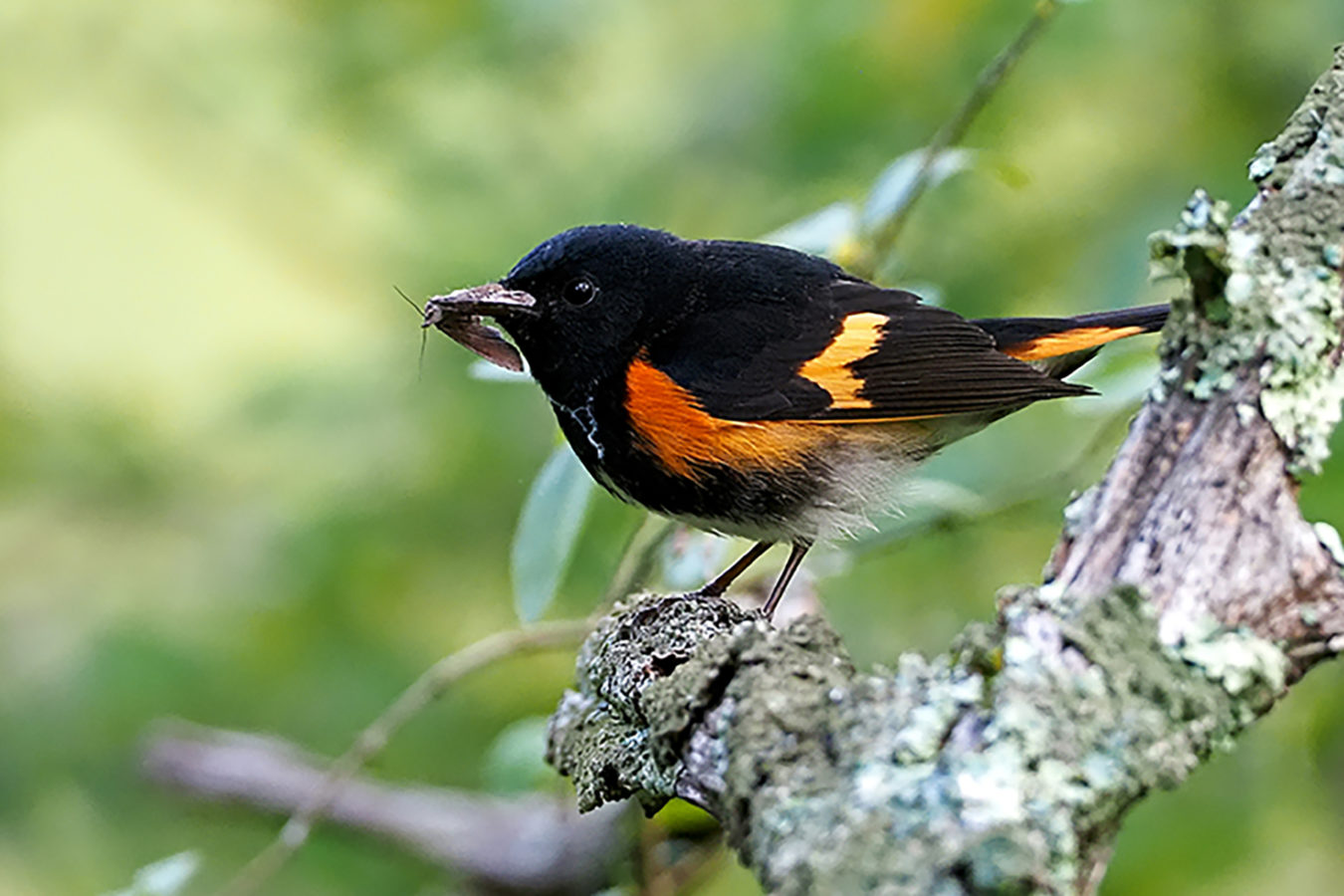
From Lesson 3: Embrace Some Messiness
Most humans have a certain look in mind for what’s attractive in a landscape. We tend to plant in rows and prefer that our landscape be neat and tidy. Yet too often, this also means a setting that won’t attract birds.
If you were a bird, you’d seek a habitat that looked good to you, meaning a habitat that provides what you need. Birds seek places where they can find food, shelter, and nesting opportunities. Often the elements that provide food or shelter—like brush, dead plants, or decaying logs—are missing from a neat yard.
So here’s a hint for humans: when it comes to creating a habitat that helps birds, what we don’t do can be just as important as what we do do.
Consider dead flower heads. When left on the plants, they continue to provide seed for birds, even in winter. By not trimming your dead flower heads, you’re actually helping your birds.
Next, let’s consider dead leaves. Leaf litter provides habitat for lots of creatures that become bird food, like insects, snails, and spiders. Birds use dead leaves to build their nests, and leaf litter is good for your plants, too. It cools and protects your soil, keeps in moisture, and releases nutrients as it breaks down. How do you get a nice leaf litter layer? That’s easy: don’t rake! Or, you can rake them into your garden beds around your plants.
How about other fallen parts of a tree, like limbs? If you leave them on the ground, you create habitat for invertebrates to thrive, another source of food for your birds.
Dead trees left standing, called snags, also provide lots of insects for birds like woodpeckers and blue jays.
So just think: messy means less work. Don’t trim your dead flowers, skip raking the leaves, and leave some limbs and snags. The birds will be better off if you don’t keep things too tidy.
A natural “messy” quality looks like home to birds and has a feeling of safety. Explore in depth how the messiness of a garden can benefit birds.
- An abundance of irregularly sized plants, spilling out of their boundaries, make for good foraging spots and readily available shelter.
- We may sometimes refer to flower heads that have lost their petals as “spent,” but the fruit and seeds that remain are often important food for birds.
- Fallen leaves provide perfect nooks for the insects that birds eat.
Include Native Plants
Some common ornamental plants aren’t native to North America. They can be replaced by some native alternatives that are aesthetically beautiful and provide resources for birds and other wildlife. Check for species local to your specific region.
Non-Native: Common Ivy

Common ivy grows aggressively, covering up and outcompeting native plants. While it produces berries, they’re unpalatable to most birds, who often spit them out.
Native: Virginia Creeper

Virginia creeper’s vines show off vibrant red foliage in fall and offer high-fat berries, which are especially valuable to migrating birds. It grows prolifically, and can be a good addition to a location while you are waiting for other, young plants to emerge.
Non-Native: Burning Bush
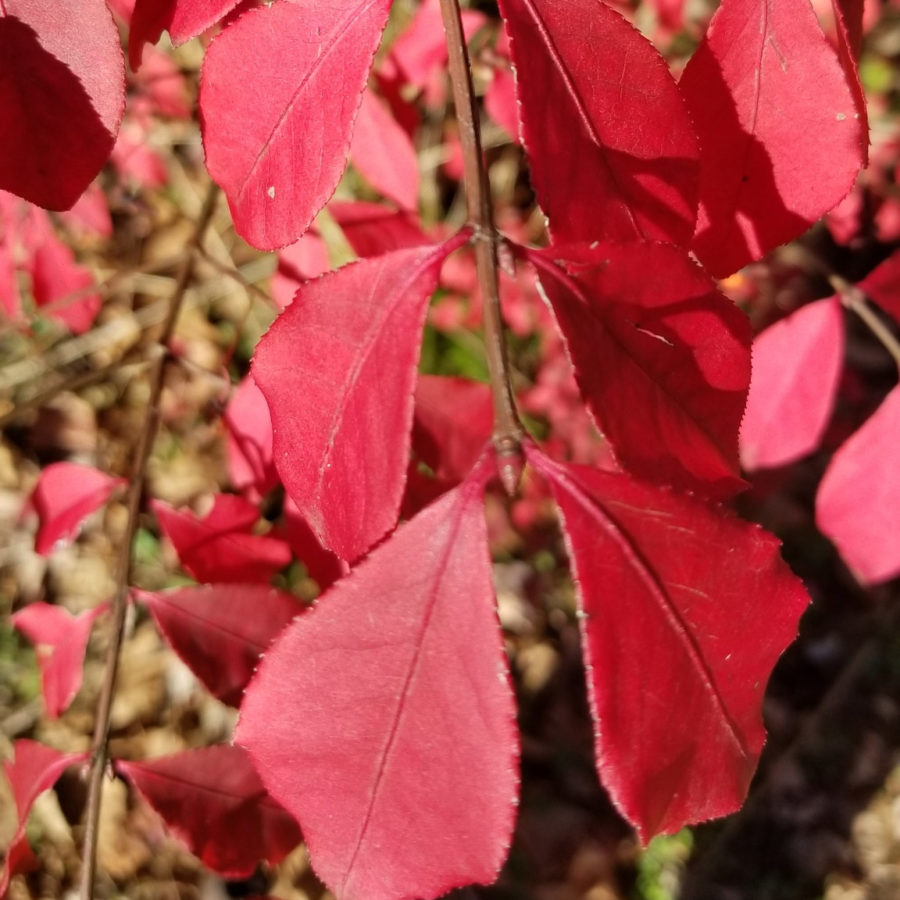
With its fast-growing sucker shoots, this plant crowds out the natives and forms thickets, but doesn’t produce any food for birds.
Native: Nannyberry
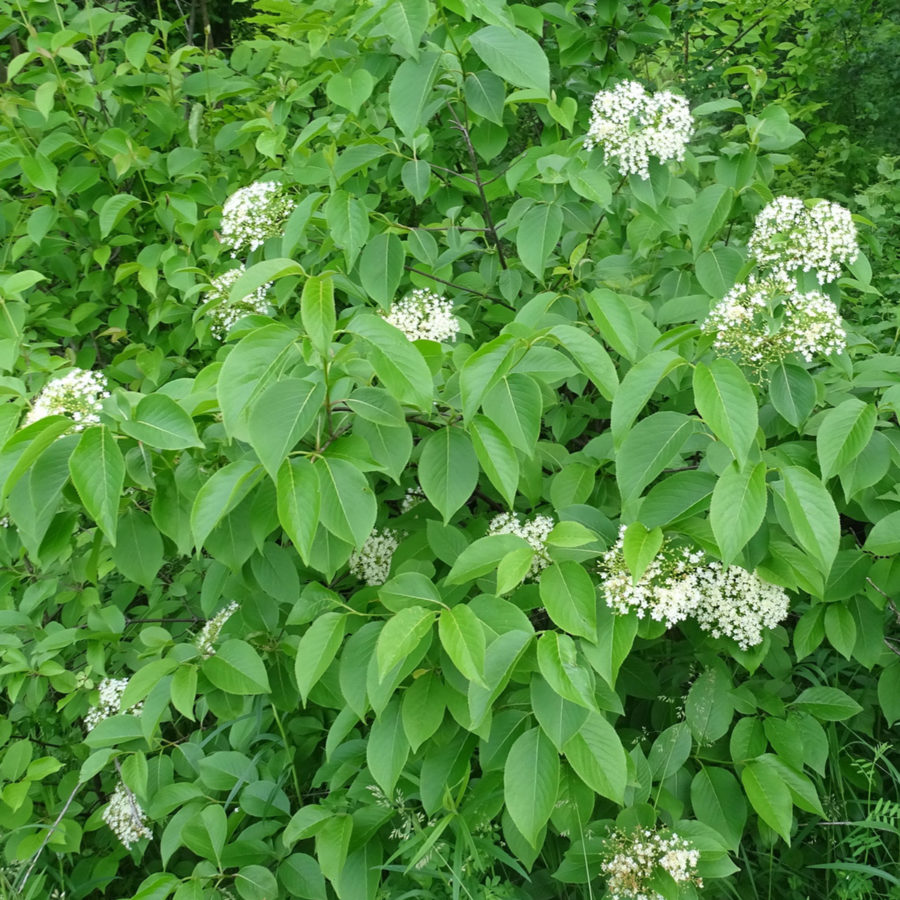
Nannyberry and other native Viburnum shrubs not only offer attractive fall foliage, but they’re a host plant for caterpillars that birds need to feed their young. This plant also produces nutritious berries.
From Lesson 4: Get To Know Your Space
Your unique patch of land has its own attributes and quirks. Taking the time to better understand it will ultimately help you make the best decisions on what you can plant to support birds.
Let’s start with ecoregion. An ecoregion is an area that has similar climate, geology, and other physical conditions that support the plants and animals that live there.
[Map of northern North America indicating 15 different ecoregions: Arctic Cordillera, Tundra, Taiga, Hudson Plain, Northern Forest, Northwestern Forest Mountains, Marine West Coast Forest, Eastern Temperate Forests, Great Plains, North American Deserts, Mediterranean California, Southern Semi-arid Highlands, Temperate Sierras, Tropical Dry Forests, Tropical Wet Forests]
This is a map of the major ecoregions in the U.S. and Canada. You’ll notice that many states and provinces have more than one ecoregion within them. Which ecoregion do you live in?
Once you know your ecoregion, the next piece to consider is your hardiness zone.
[Map of northern North America with horizontal colored bands indicating hardiness zones. Twenty bands, each indicating a five degree difference in average minimum temperature.]
Hardiness zones show how cold a place gets in the winter. Some plants can survive in just one hardiness zone, while others are suited to multiple zones. There are good online tools to help you figure out what zone you live in.
Ecoregion and hardiness zone work together to tell you what plants are native to your location and can survive your winter temperatures. Let’s take a look at an example. Say you live in southern Florida and you notice that parts of southern California are in the same hardiness zone. Could you plant things native to California in your Florida yard? Yes, you could, and they may even survive, but they are not from the ecoregion in southern Florida, so they won’t fit in with the ecosystem that’s there. So, get to know your ecoregion and your hardiness zone to know the plants suited to your general area.
Now, what about your specific yard? To know the plants that will thrive in your outdoor space, notice its unique conditions. Take a stroll around to discover what parts of your yard are sunny, or shady? Very wet, or dry? Does your soil have a lot of sand in it, or maybe clay? Paying attention to each of these pieces of information can help you make a good prediction of plants that will do well in different parts of your yard. Tags on plants at nurseries will note preferred conditions, like partial sun, or full shade.
Getting to know your local place will give you a leg up when it comes to identifying the right plants for your yard. Use ecoregion and hardiness zone as your guides, along with your own backyard observations, and you’ll be off to a great start.
Enroll in Growing Wild: Gardening for Birds and Nature Now!
Thanks for previewing sample videos and topics from Growing Wild: Gardening for Birds and Nature. There are more videos and topics to learn from in this self-paced course—plus regional guides for the U.S. and Canada, planning guides, and discussion boards—to help you dive in and create your better, more bird-friendly garden.